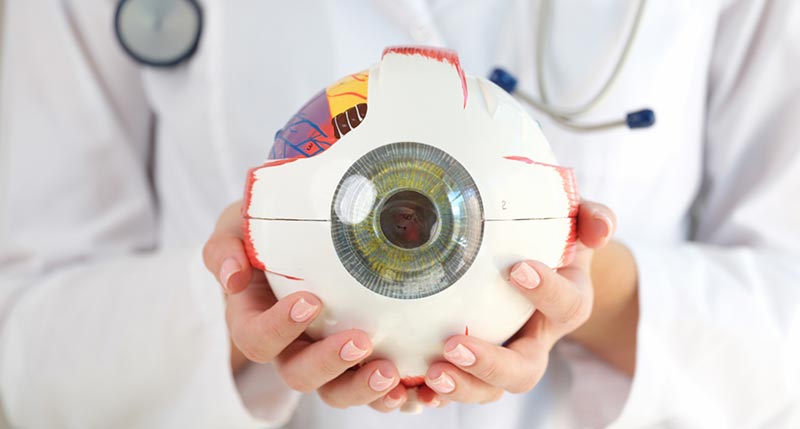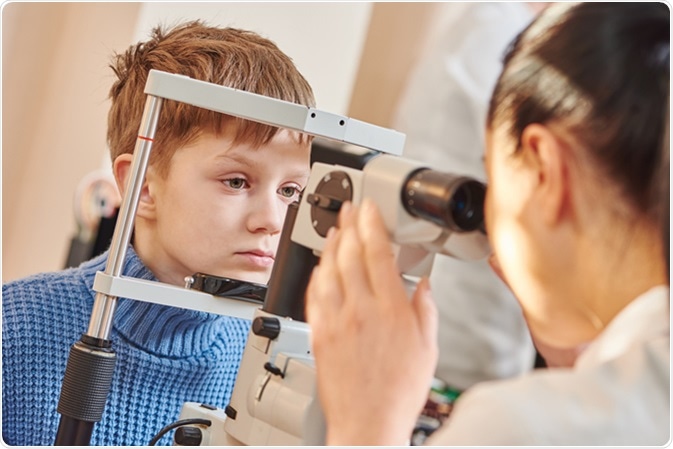The Complete Breakdown of Retina Disorders and How They Impact Your Vision
Retina conditions can interrupt this delicate procedure, leading to a variety of vision problems. By checking out the makeup of the retina, common problems that can affect it, their reasons, signs, and readily available therapy alternatives, we can obtain useful understandings right into preserving and securing our vision.
Overview of Retina Composition
The elaborate framework of the retina works as the structure for aesthetic understanding and plays a vital function in the process of converting light into neural signals for the mind to analyze. Situated at the back of the eye, the retina includes numerous layers that function together effortlessly to help with vision. At the core of this complicated framework are photoreceptor cells called rods and cones. Rods are accountable for vision in low light problems and identifying motion, while cones are necessary for color vision and in-depth aesthetic acuity. These photoreceptor cells transform light power right into electrical signals that are after that processed by various other retinal cells, such as bipolar cells and ganglion cells. The bipolar cells beam from the photoreceptors to the ganglion cells, which subsequently send out these signals through the optic nerve to the brain for aesthetic processing. Understanding the elaborate composition of the retina is essential in understanding how vision features and how different retina problems can influence visual understanding.

Usual Retina Disorders
Retina conditions include a variety of conditions that affect the complex structure of the eye responsible for aesthetic processing. One typical condition is age-related macular deterioration (AMD), a leading root cause of vision loss in individuals over 50. AMD impacts the macula, a component of the retina critical for sharp central vision, bring about blurriness or blind areas in the main aesthetic area.
Another common problem is diabetic retinopathy, occurring in people with diabetic issues. High blood glucose degrees harm the capillary in the retina, causing vision impairment or loss of sight if left untreated. Retinal detachment is a significant problem where the retina retreats from its regular setting, creating an unexpected beginning of floaters, flashes of light, or loss of vision in a curtain-like pattern.
Last but not least, retinitis pigmentosa is a group of congenital diseases that create the break down and loss of cells in the retina, bring about night blindness and a gradual narrowing of the aesthetic field - eye center andalusia. Understanding these common retina disorders is critical in preserving vision and looking for timely medical intervention
Reasons For Retina Disorders
Various variables add to the growth of retina disorders, including hereditary tendencies, way of life choices, and underlying health conditions. Genetic predispositions play a substantial duty in lots of retina disorders, such as retinitis pigmentosa and macular degeneration. Individuals with a family background of these problems go to a greater risk of creating them because of inherited genetic mutations affecting the retina's feature.
Way of living options can also affect retina health and wellness. Smoking, for example, has been linked to an increased danger of age-related macular deterioration, an usual retina condition that can cause vision loss. Poor nutritional practices lacking vital nutrients like vitamins A, C, and E, along with omega-3 fatty acids, can additionally add to the development of retina conditions.
Underlying wellness conditions, such as diabetes and high blood pressure, are understood to influence the retina. Diabetic retinopathy, an issue of diabetes, can create damage to the capillary in the retina, bring about vision disability. Likewise, high blood pressure can cause hypertensive retinopathy, where high blood pressure influences the capillary in the retina, potentially causing vision problems. Recognizing these causes is essential in taking care of and protecting against retina conditions.
Signs And Symptoms and Diagnosis
Given the substantial effect that creates such as hereditary predispositions, lifestyle selections, and underlying health and wellness problems can have on the growth of retina problems, it is necessary to acknowledge the symptoms and utilize efficient analysis techniques for very early discovery and monitoring. Symptoms of retina conditions can differ depending on the specific problem but may include blurred or distorted vision, the unexpected look of drifters or flashes of light, a dark area in the center of your vision, or a steady loss of central vision. It is critical to look for immediate clinical attention. if you experience any of these signs and symptoms.
Identifying retina disorders commonly includes a comprehensive eye assessment, which may consist of aesthetic acuity examinations, dilated eye exams, optical coherence tomography (OCT), fluorescein angiography, or various other imaging tests. Your eye treatment copyright may likewise inquire about your case history and any type of family background of eye problems. Early detection with regular eye examinations is key to stop vision loss and managing retina problems effectively. Your healthcare supplier will certainly work with you to establish a tailored therapy plan to protect your vision. if detected with a retina disorder.
Therapy Options and Administration
Treatment options for retina disorders vary depending on the underlying cause and intensity visit our website of the problem. In situations of retinal detachment, medical interventions such as vitrectomy or scleral buckling may be required to avoid and reattach the retina vision loss.
Routine eye exams and early detection of retina problems are important for effective management and therapy end results. Clients with retina problems ought to function closely with their eye doctor to create a customized therapy strategy that resolves their details requirements and helps preserve optimum visual function.
Final Thought
In conclusion, comprehending the makeup of the retina, usual disorders, causes, signs, medical diagnosis, and therapy anonymous options is vital in taking care of vision impairments. Retina conditions can dramatically influence vision and quality of life, making early detection and appropriate monitoring vital. By remaining notified about these problems and looking for appropriate medical care, individuals can better protect their vision and keep general eye health.

Comprehending the intricate anatomy of the retina is basic in understanding exactly how vision features and just how different retina problems can impact visual perception.
Retinal detachment is a major problem where the retina pulls away from its normal placement, triggering an abrupt start of advances, flashes of light, or loss of vision in a curtain-like pattern.
Symptoms of retina conditions can differ depending on the specific condition but might consist of blurred or distorted vision, the unexpected look of floaters or flashes of light, a investigate this site dark spot in the facility of your vision, or a progressive loss of main vision.In final thought, comprehending the composition of the retina, typical conditions, causes, symptoms, diagnosis, and therapy alternatives is critical in taking care of vision disabilities.